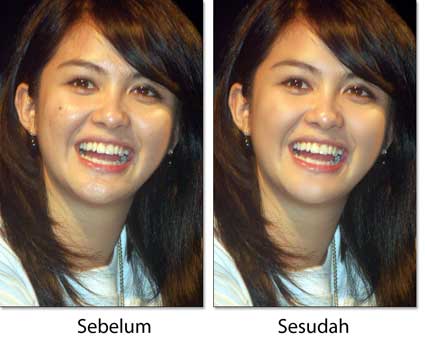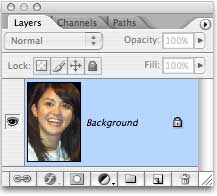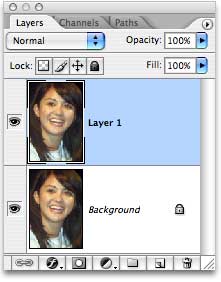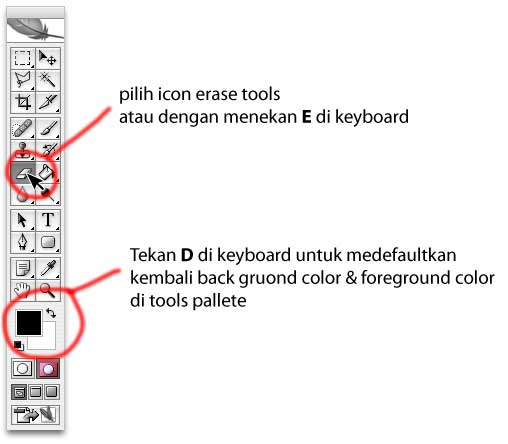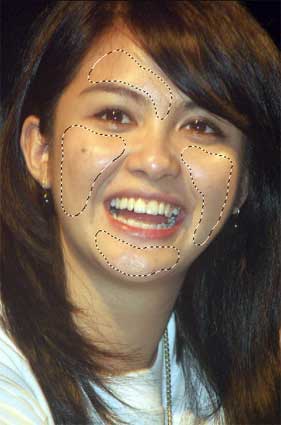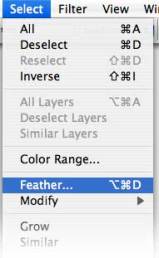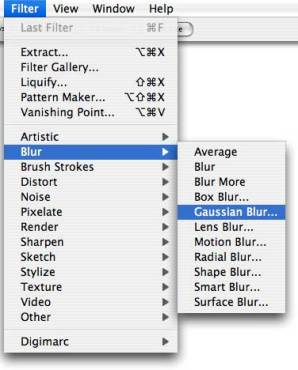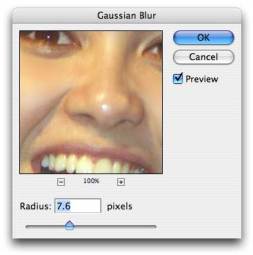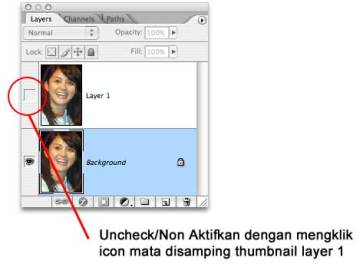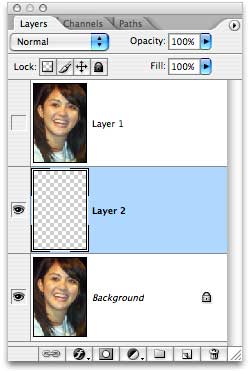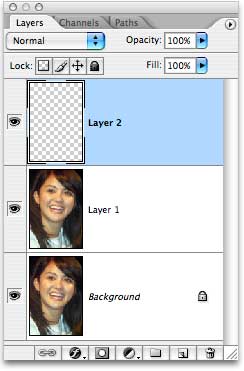BAB I
PENDAHULUAN
A. Latar Belakang
Pemberlakuan Undang-undang No. 22 tahun 1999 tentang Pemerintahan Daerah menuntut pelaksanaan otonomi daerah dan wawasan demokrasi yang lebih menyeluruh, tentunya hal ini juga menyangkut pengelolaan sumber daya manusia. Salah satu upaya untuk mengelola dan meningkatkan sumber daya manusia, pemerintah harus memiliki keperdulian untuk memperbaiki perencanaan, pengeloaan, dan penyelenggraan pendidikan di wilayahnya masing-masing.
Selain itu tuntutan globalisasi dalam bidang pendidikan juga perlu dipertimbangkan agar hasil pendidikan nasional dapat bersaing dengan negara-negara maju. Upaya ke arah ini kini sudah mulai diwujudkan dengan diperkenalkannya konsep pengelolaan dan penyelenggaraan pendidikan dari sentralistik ke desentralistik.
Desentralisasi pengelolaan pendidikan ini diarahkan oleh Undang-undang No. 20 Tahun 2003 tentang Sistem Pendidikan Nasional, dan Peraturan Pemerintah Republik Indonesia Nomor 19 tahun 2005 (PP 19/2005) tentang Standar Nasional Pendidikan, landasan hukum tersebut mengamanatkan agar kurikulum pendidikan bagi pendidikan tingkat dasar dan tingkat menengah disusun oleh satuan pendidikan dengan mengacu kepada Standar Isi (SI) dan Standar Kompetensi Lulusan (SKL) serta berpedoman pada panduan yang disusun oleh Badan Standar Nasional Pendidikan (BSNP).
Hal ini harus diwujudkan dalam pengembangan silabus dan pelaksanaannya yang disesuaikan dengan tuntutan kebutuhan siswa, keadaan sekolah, dan kondisi daerah. Dengan demikian, daerah atau sekolah memiliki kewenangan untuk merancang dan menentukan hal - hal yang akan diajarkan, pengelolaan pengalaman belajar, cara mengajar, dan menilai keberhasilan suatu proses belajar dan mengajar. Seiring dengan adanya upaya untuk memberdayakan peran serta daerah dan masyarakat dalam pengelolaan pendidikan, Pemerintah telah memberlakukan otonomi dalam bidang pendidikan yang diwujudkan dalam PP No. 25 tahun 2000 pasal 2 ayat 2 yang menyatakan bahwa pemerintah (Pusat) memiliki kewenangan dalam menyusun kurikulum dan penilaian hasil belajar secara nasional, hal-hal yang berhubungan dengan implementasinya dikembangkan dan dikelola oleh pelaksana di daerah terutama di daerah tingkat II dan sekolah.
Pemerintah Pusat mengembangkan antara lain (1) Kompetensi Dasar dan materi pelajaran pokok, (2) kalender pendidikan dan jumlah jam belajar efektif setiap tahun dan pedoman-pedoman pelaksanaannya. Sementara para pengelola dan pengembang di daerah diharapkan dapat (1) mengembangkan menjabarkan kompetensi dan materi pelajaran pokok mengacu pada standar nasional, menyusun kurikulum muatan lokal (2) menyusun dan menetapkan petunjuk pelaksanaan kalender pendidikan dan jam belajar (3) menyusun dan menetapkan petunjuk pelaksanaan penilaian hasil belajar yang didasarkan pada ketetapan pemerintah secara nasional. Berdasarkan ketentuan di atas, daerah atau sekolah memiliki ruang gerak yang luas untuk melakukan modifikasi dan mengembangkan variasi penyelenggaraan pendidikan sesuai dengan keadaan, potensi, dan kebutuhan daerah serta kondisi siswa. Kebijakan di atas juga diharapkan dapat memenuhi tuntutan masyarakat melalui program reformasi yang menginginkan adanya perubahan mendasar dalam sistem pendidikan, baik secara konseptual maupun aturan-aturan pelaksanaannya.
Kebijakan di atas kini telah diperbaharui dengan Peraturan Pemerintah yang terbaru dimana dari aspek kurikulum, banyak hal yang perlu dipersiapkan oleh daerah, karena sebagian besar kebijakan yang berkaitan dengan implementasi kurikulum dilakukan oleh daerah sebagaimana tercantum dalam landasan yuridis berikut ini:
PP NO 19 TAHUN 2005 Pasal 17 Ayat (2) ;Sekolah dan komite sekolah, atau madrasah dan komite madrasah, mengembangkan kurikulum tingkat satuan pendidikan dan silabusnya berdasarkan kerangka dasar kurikulum dan standar kompetensi lulusan, di bawah supervisi dinas kabupaten/kota yang bertanggung jawab di bidang pendidikan untuk SD, SMP, SMA, dan SMK, dan departemen yang menangani urusan pemerintahan di bidang agama untuk MI. MTs, MA, dan MAK
PP NO 19 TAHUN 2005 Pasal 20; Rencana pelaksanaan pembelajaran (RPP) adalah rencana yang menggambarkan prosedur dan pengorganisasian pembelajaran untuk mencapai satu kompetensi dasar yang ditetapkan dalam Standar Isi dan dijabarkan dalam silabus. Lingkup Rencana Pembelajaran paling luas mencakup 1 (satu) kompetensi dasar yang terdiri atas 1 (satu) indikator atau beberapa indikator untuk 1 (satu) kali pertemuan atau lebih.
Hal ini berarti daerah perlu menyusun silabus dengan cara melakukan penjabaran terhadap stándar kompetensi dan kompetensi dasar ke dalam bentuk silabus dan rencana pelaksanaan pembelajaran, yang memuat materi setempat yang relevan, serta penyusunan kurikulum daerah yang sesuai dengan kondisi, kebutuhan serta potensi setempat, yang kemudian dikenal dengan istilah Kurikulum Tingklat Satuan Pendidikan (KTSP).
B. Deskripsi Singkat
Makalah ini membahas tentang apa dan mengapa silabus perlu dikembangkan, bagaimana mekanisme pengembangan silabus, apa komponen dan format silabus, bagaimana menyusun pengalaman belajar, dan mengembangkan silabus berkelanjutan berupa rencana pelaksanaan pembelajaran (RPP).
Makalah secara umum sangat bermanfaat bagi para peserta diklat untuk menambah wawasan, pengetahuan, dan keterampilan dalam merencanakan mengimplementasi kurikulum tingkat satuan pendidikan dan memberikan penjelasan tentang prosedur dan cara menjabarkan Standar Kompetensi dan Kompetensi Dasar yang terdapat dalam Standar Isi, menjadi materi pokok, kegiatan pembelajaran, indikator, dan penilaian, serta menentukan sumber-sumber bahan pembelajaran.
D. Tujuan Pembelajaran
Setelah selesai pembelajaran diklat ini, diharapkan dapat:
1. menjelaskan pengertian silabus dan RPP
2. menjelaskan prinsip pengembangan silabus dan RPP
3. menjelaskan bagaimana langkah-langkah pengembangan silabus dan RPP
3. menjelaskan ragam komponen dari format silabus dan RPP
4. menyusun silabus berkelanjutan dalam rencana pelaksanaan pembelajaran.
BAB II
PRINSIP DASAR PENGEMBANGAN SILABUS
A. Pengertian Silabus
Silabus adalah rencana pembelajaran pada suatu dan/atau kelompok mata pelajaran/tema tertentu yang mencakup standar kompetensi , kompetensi dasar, materi pokok/pembelajaran, kegiatan pembelajaran, indikator, penilaian, alokasi waktu, dan sumber/bahan/alat belajar. Silabus merupakan penjabaran standar kompetensi dan kompetensi dasar ke dalam materi pokok/pembelajaran, kegiatan pembelajaran, dan indikator pencapaian kompetensi untuk penilaian.
Silabus merupakan seperangkat rencana dan pengaturan tentang kegiatan pembelajaran, pengelolaan kelas, dan penilaian hasil belajar.
Silabus berisikan komponen pokok yang dapat menjawab pertanyaan berikut.:
(1) Kompetensi apa yang akan dikembangkan siswa?
(2) Bagaimana cara mengembangkannya?
(3) Bagaimana cara mengetahui bahwa kompetensi tersebut sudah dicapai siswa?
B. Prinsip Pengembangan Silabus
1. Ilmiah . Keseluruhan materi dan kegiatan yang menjadi muatan dalam silabus harus benar dan dapat dipertanggungjawabkan secara keilmuan.
2. Relevan. Cakupan, kedalaman, tingkat kesukaran dan urutan penyajian materi dalam silabus sesuai dengan tingkat perkembangan fisik, intelektual, sosial, emosional, dan spritual peserta didik.
3. Sistematis. Komponen-komponen silabus saling berhubungan secara fungsional dalam mencapai kompetensi.
4. Konsisten. Adanya hubungan yang konsisten (ajeg, taat asas) antara kompetensi dasar, indikator, materi pokok, pengalaman belajar, sumber belajar, dan sistem penilaian.
5. Memadai. Cakupan indikator, materi pokok, pengalaman belajar, sumber belajar, dan sistem penilaian cukup untuk menunjang pencapaian kompetensi dasar.
6. Aktual dan Kontekstual. Cakupan indikator, materi pokok, pengalaman belajar, sumber belajar, dan sistem penilaian memperhatikan perkembangan ilmu, teknologi, dan seni mutakhir dalam kehidupan nyata, dan peristiwa yang terjadi.
7. Fleksibel. Keseluruhan komponen silabus dapat mengakomodasi keragaman peserta didik, pendidik, serta dinamika perubahan yang terjadi di sekolah dan tuntutan masyarakat.
8. Menyeluruh. Komponen silabus mencakup keseluruhan ranah kompetensi (kognitif, afektif, psikomotor).
C. Unit Waktu Silabus
1. Silabus mata pelajaran disusun berdasarkan seluruh alokasi waktu yang
disediakan untuk mata pelajaran selama penyelenggaraan pendidikan di
tingkat satuan pendidikan.
2. Penyusunan silabus memperhatikan alokasi waktu yang disediakan per
semester, per tahun, dan alokasi waktu mata pelajaran lain yang sekelompok.
3. Implementasi pembelajaran per semester menggunakan penggalan silabus
sesuai dengan Standar Kompetensi dan Kompetensi Dasar untuk mata
pelajaran dengan alokasi waktu yang tersedia pada struktur kurikulum.
Khusus untuk SMK/MAK menggunakan penggalan silabus berdasarkan
satuan kompetensi.
D. Pengembang Silabus
Pengembangan silabus dapat dilakukan oleh para guru secara mandiri atau berkelompok dalam sebuah sekolah atau beberapa sekolah, kelompok Musyawarah Guru Mata Pelajaran (MGMP) pada atau Pusat Kegiatan Guru (PKG), dan Dinas Pendikan.
1. Disusun secara mandiri oleh guru apabila guru yang bersangkutan mampu mengenali karakteristik siswa, kondisi sekolah dan lingkungannya.
2. Apabila guru mata pelajaran karena sesuatu hal belum dapat melaksanakan pengembangan silabus secara mandiri, maka pihak sekolah dapat mengusahakan untuk membentuk kelompok guru mata pelajaran untuk mengembangkan silabus yang akan digunakan oleh sekolah tersebut.
3. Di SD/MI semua guru kelas, dari kelas I sampai dengan kelas VI, menyusun silabus secara bersama. Di SMP/MTs untuk mata pelajaran IPA dan IPS terpadu disusun secara bersama oleh guru yang terkait.
4. Sekolah yang belum mampu mengembangkan silabus secara mandiri, sebaiknya bergabung dengan sekolah-sekolah lain melalui forum MGMP/PKG untuk bersama-sama mengembangkan silabus yang akan digunakan oleh sekolah-sekolah dalam lingkup MGMP/PKG setempat.
5. Dinas Pendidikan setempat dapat memfasilitasi penyusunan silabus dengan membentuk sebuah tim yang terdiri dari para guru berpengalaman di bidangnya masing-masing.
BAB III
LANGKAH-LANGKAH PENGEMBANGAN SILABUS DAN
RENCANA PELAKSANAAN PEMBELAJARAN
A. Langkah-langkah Pengembangan Silabus
Sebagaimana telah dikemukakan dalam uraian sebelumnya Silabus adalah rencana pembelajaran pada suatu dan/atau kelompok mata pelajaran/tema tertentu yang mencakup standar kompetensi, kompetensi dasar, materi pokok/pembelajaran, indikator, penilaian, alokasi waktu, dan sumber/bahan/alat belajar. Silabus merupakan penjabaran standar kompetensi dan kompetensi dasar ke dalam materi pokok/pembelajaran, kegiatan pembelajaran, dan indikator pencapaian kompetensi untuk penilaian. Mengembangkan silabus dilakukan melalui langkah-langkah sebagai berikut:
1. Mengkaji Standar Kompetensi dan Kompetensi Dasar
Mengkaji standar kompetensi dan kompetensi dasar mata pelajaran
sebagaimana tercantum pada Standar Isi, dengan memperhatikan hal-hal
berikut:
a. urutan berdasarkan hierarki konsep disiplin ilmu dan/atau tingkat kesulitan
materi, tidak harus selalu sesuai dengan urutan yang ada di Standar Isi;
b. keterkaitan antara standar kompetensi dan kompetensi dasar dalam mata
pelajaran;
c. keterkaitan antara standar kompetensi dan kompetensi dasar antar mata
pelajaran.
2. Mengidentifikasi Materi Pokok/Pembelajaran
Mengidentifikasi materi pokok/pembelajaran yang menunjang pencapaian kompetensi dasar dengan mempertimbangkan:
a. potensi peserta didik;
b. relevansi dengan karakteristik daerah,
c. tingkat perkembangan fisik, intelektual, emosional, sosial, dan spritual peserta didik;
d. kebermanfaatan bagi peserta didik;
e. struktur keilmuan;
f. aktualitas, kedalaman, dan keluasan materi pembelajaran;
g. relevansi dengan kebutuhan peserta didik dan tuntutan lingkungan; dan
h. alokasi waktu.
3. Mengembangkan Kegiatan Pembelajaran
Kegiatan pembelajaran dirancang untuk memberikan pengalaman belajar yang melibatkan proses mental dan fisik melalui interaksi antarpeserta didik, peserta didik dengan guru, lingkungan, dan sumber belajar lainnya dalam rangka pencapaian kompetensi dasar. Pengalaman belajar yang dimaksud dapat terwujud melalui penggunaan pendekatan pembelajaran yang bervariasi dan berpusat pada peserta didik. Pengalaman belajar memuat kecakapan hidup yang perlu dikuasai peserta didik. Hal-hal yang harus diperhatikan dalam mengembangkan kegiatan pembelajaran adalah sebagai berikut.
a. Kegiatan pembelajaran disusun untuk memberikan bantuan kepada para pendidik, khususnya guru, agar dapat melaksanakan proses pembelajaran secara profesional.
b. Kegiatan pembelajaran memuat rangkaian kegiatan yang harus dilakukan oleh peserta didik secara berurutan untuk mencapai kompetensi dasar.
c. Penentuan urutan kegiatan pembelajaran harus sesuai dengan hierarki konsep materi pembelajaran.
d. Rumusan pernyataan dalam kegiatan pembelajaran minimal mengandung dua unsur penciri yang mencerminkan pengelolaan pengalaman belajar siswa, yaitu kegiatan siswa dan materi.
4. Merumuskan Indikator Pencapaian Kompetensi
Indikator merupakan penanda pencapaian kompetensi dasar yang ditandai oleh perubahan perilaku yang dapat diukur yang mencakup sikap, pengetahuan, dan keterampilan.
Indikator dikembangkan sesuai dengan karakteristik peserta didik, mata pelajaran, satuan pendidikan, potensi daerah dan dirumuskan dalam kata kerja operasional yang terukur dan/atau dapat diobservasi. Indikator digunakan sebagai dasar untuk menyusun alat penilaian.
5. Penentuan Jenis Penilaian
Penilaian pencapaian kompetensi dasar peserta didik dilakukan berdasarkan indikator. Penilaian dilakukan dengan menggunakan tes dan non tes dalam bentuk tertulis maupun lisan, pengamatan kinerja, pengukuran sikap, penilaian hasil karya berupa tugas, proyek dan/atau produk, penggunaan portofolio, dan penilaian diri.
Penilaian merupakan serangkaian kegiatan untuk memperoleh, menganalisis, dan menafsirkan data tentang proses dan hasil belajar peserta didik yang dilakukan secara sistematis dan berkesinambungan, sehingga menjadi informasi yang bermakna dalam pengambilan keputusan. Hal-hal yang perlu diperhatikan dalam penilaian.
a. Penilaian diarahkan untuk mengukur pencapaian kompetensi.
b. Penilaian menggunakan acuan kriteria; yaitu berdasarkan apa yang bisa dilakukan peserta didik setelah mengikuti proses pembelajaran, dan bukan untuk menentukan posisi seseorang terhadap kelompoknya.
c. Sistem yang direncanakan adalah sistem penilaian yang berkelanjutan. Berkelanjutan dalam arti semua indikator ditagih, kemudian hasilnya dianalisis untuk menentukan kompetensi dasar yang telah dimiliki dan yang belum, serta untuk mengetahui kesulitan siswa.
d. Hasil penilaian dianalisis untuk menentukan tindak lanjut. Tindak lanjut berupa perbaikan proses pembelajaran berikutnya, program remedi bagi peserta didik yang pencapaian kompetensinya di bawah kriteria ketuntasan, dan program pengayaan bagi peserta didik yang telah memenuhi kriteria ketuntasan.
e. Sistem penilaian harus disesuaikan dengan pengalaman belajar yang ditempuh dalam proses pembelajaran. Misalnya, jika pembelajaran menggunakan pendekatan tugas observasi lapangan maka evaluasi harus diberikan baik pada proses (keterampilan proses) misalnya teknik wawancara, maupun produk/hasil melakukan observasi lapangan yang berupa informasi yang dibutuhkan.
6. Menentukan Alokasi Waktu
Penentuan alokasi waktu pada setiap kompetensi dasar didasarkan pada jumlah minggu efektif dan alokasi waktu mata pelajaran per minggu dengan mempertimbangkan jumlah kompetensi dasar, keluasan, kedalaman, tingkat kesulitan, dan tingkat kepentingan kompetensi dasar. Alokasi waktu yang dicantumkan dalam silabus merupakan perkiraan waktu rerata untuk menguasai kompetensi dasar yang dibutuhkan oleh peserta didik yang beragam.
7. Menentukan Sumber Belajar
Sumber belajar adalah rujukan, objek dan/atau bahan yang digunakan untuk kegiatan pembelajaran, yang berupa media cetak dan elektronik, narasumber, serta lingkungan fisik, alam, sosial, dan budaya.
Penentuan sumber belajar didasarkan pada standar kompetensi dan kompetensi dasar serta materi pokok/pembelajaran, kegiatan pembelajaran, dan indikator pencapaian kompetensi.
B. Contoh Format Silabus
Dalam menyusun silabus dapat memilih salah satu format yang ada di antara berbagai macam format yang berlaku.
SILABUS
Mata Pelajaan :.....................
Alokasi Waktu per Semester : ............. jam pelajaran
Kelas/Semester :..................................
Standar Kompetensi : .............................
